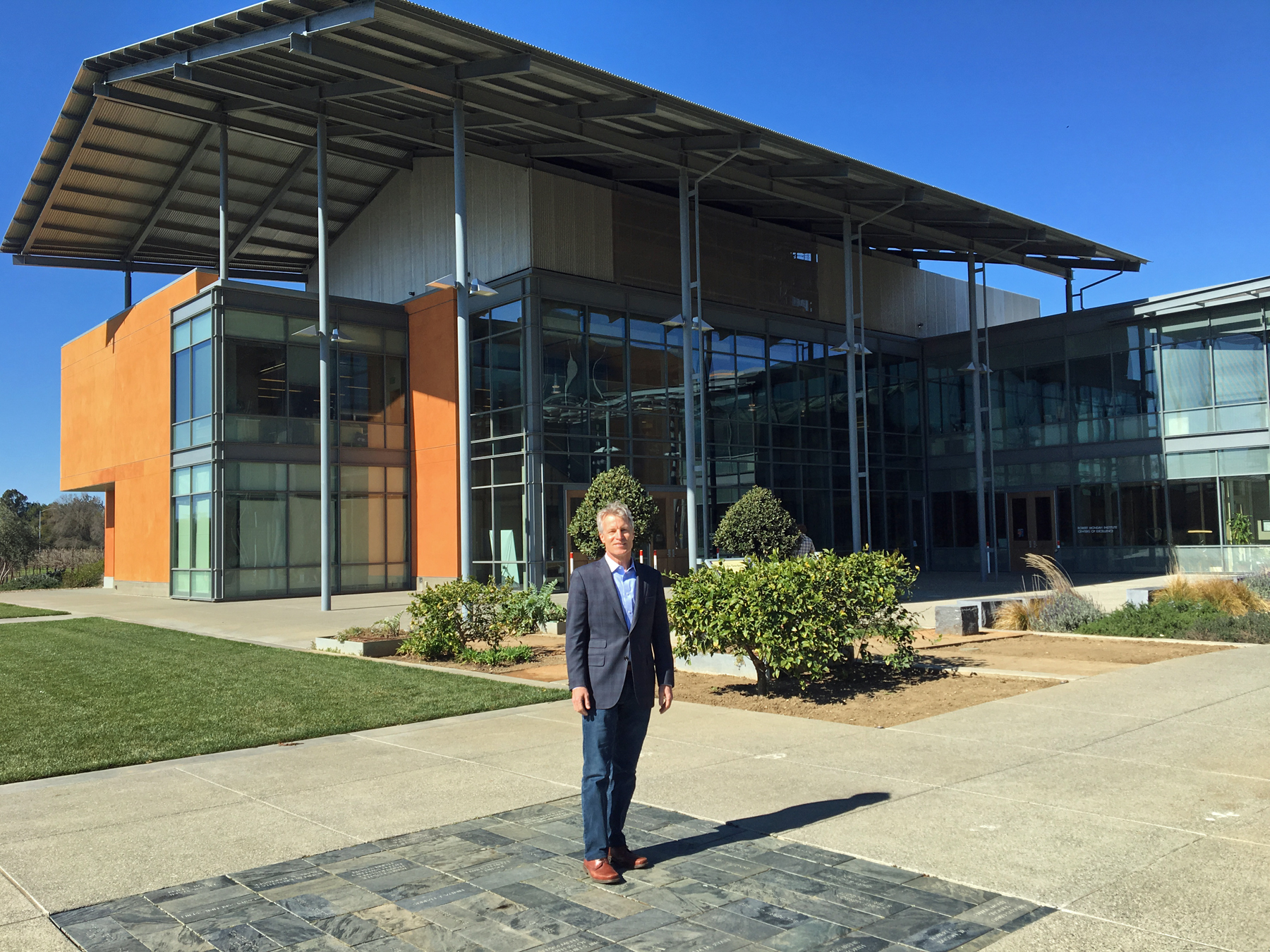Olives and the Sacramento Valley: 3 tasty facts
Contributed by Jennifer Harrison
Above olive photo credit: Alana Joldersma, UC Davis
Olives and our valley go hand in hand. “The Sacramento Valley is kind of the
epicenter for olive growing in North America,” said Dan Flynn, Executive
Director of the UC Davis Olive Center. The center’s goal: do for olives and
olive oil what UC Davis has done for grapes and wine. I visited this olive
focused place, nestled in the Robert Mondavi Institute, and gleaned some
fascinating facts. I also finally grasped the difference between extra virgin,
virgin and pure olive oil. You can too, it’s in the final fact.

1. Blame it on bikes
In 2004 bike accidents seemed constant on parts of the UCD campus.
Sal Genito, Director of the Ground Division at the time, noticed it was
campus olive trees, dropping their fruit, causing the bike path hazards. He
also saw a solution. “Sal had the idea to maybe harvest the olives off the
trees, make olive oil and turn this problem into something that would be
beneficial to the campus,” explained Flynn. What started with selling
campus olive oil materialized into a self-funded research and education
center for all things olives. They offer everything from grower education to
classes for you and me.

2. Mediterranean climate and research
The Sacramento Valley has long been fertile ground for olive trees. “We are
in the sweet spot in terms of climate. We have a Mediterranean climate,
where olives grow well,” explained Flynn, adding that places like Corning,
Colusa and the Capay Valley grow olives. Back in 2004, when the center
started, California as a whole was producing about half a million gallons of
olive oil a year, now that number is up to 4 million gallons per year, with
room for more. “In the US we consume 80 million gallons year, so there’s a
lot of room for growth just in domestic consumption,” detailed Flynn. With
growth comes the need for research. “One big area we focus on is quality of
the product,” said Flynn. This research established a first of its kind
standard for rating California olive oils, which happens to be stricter than
international standards.
Other research includes the health benefits of olive oil and how we consume
this liquid gold.

3. Extra Virgin-what does that really mean?
Extra Virgin Olive Oil: Top grade of the different oils.
“This is made like a fruit juice, crushing fruit, extracting juice, and because
it’s made so simply the quality of the fruit you start with is important,”
explained Flynn, adding to look for fruitiness, bitterness and pungency (a
sensation at the back of the throat) in your oil. Due to minimal processing,
high antioxidant content is found here.

Virgin Olive Oil: The same as extra virgin, yet without the highest level of
chemical and sensory standards.
Pure Olive Oil: Goes through a refining process, more like a vegetable oil,
but has virgin olive oil added in.
Light or Extra Light Olive Oil: Not really a grade, more of a marketing term.
A refined olive oil with a neutral taste and often a higher smoking point,
some use when cooking with high heat.
Finally, look for olive oil in dark glass or a label-covered containers. Why?
Light and heat are the enemy of fresh olive oil. Use that oil! Once olive oil
is bottled it has a 18-24 month shelf life, but once opened, it’s best to use
it within 1-2 months. And grab the Sacramento Valley stuff, it’s
a growing part of our diverse valley.
